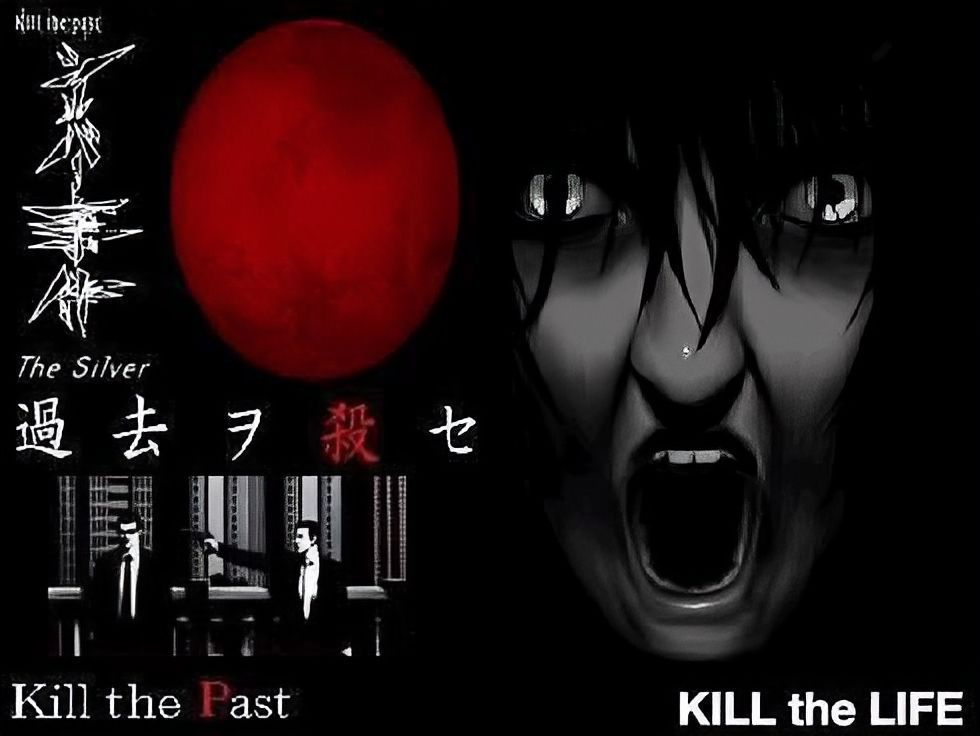
Think of incidents in your life that you wished never occurred.
Mr. TD
Wouldn’t you wish to erase that past from your memory?
If said past is detested, then killing the past would erase it from existence.
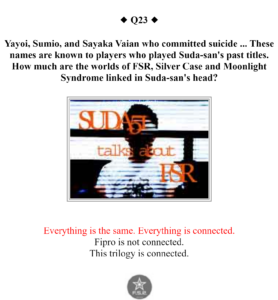
Kill the Past is a mixed media franchise revolving around the lives of individuals who are in conflict with their pasts in an ever-changing sociopolitical and technological landscape. It’s the life work of game developer and writer Goichi Suda, also known as SUDA51, CEO of Grasshopper Manufacture.
The connections between his earlier games were something of an open secret until 2001, during which Suda confirmed that most the titles he directed up until that point formed a continuous narrative. As such, the series has no official title: “Kill the Past” is a tagline used several time within said games, which was adopted by Japanese fans as a way to refer to the series itself.
In Suda’s own words, “Kill the Past” refers to one who dwells on a traumatic event from their past; one who only manages to maintain their self-consciousness by repeating a set of patterns that reflects their past. Their trauma must be confronted head on in order to move forward into the future.
Q27
Source
The phrase ‘Kill the past’ also shows up in your past games. Have you thought about killing your past? Why? Do you hate the past, and if yes, why?
A27
I have seen a lot of people who only remain themselves by repeating the same things they’ve done in the past and I really don’t want to be like them. Killing the past is also synonymous with fighting with the future, and what makes the future alive is facing the past and settling things.
Basically, I don’t want to cling to the same past things when I make games, since the players also want to see something new. I only look at the possibility of making games that face the future.
That means fighting for the future.
This core tenant would be reflected in his design philosophy; through the course of his career, Suda always did his best to avoid iterating on previous ideas. It was also reflected in the unique mythology he created for his fictional universe: ghosts are not depicted as wandering spirits, but rather as remnant psyches, a lingering thought of the past that won’t let go of the present.
In many cases, the push for urbanization during the economic boom is depicted as the original sin responsible for severing the thread of tradition, erasing national culture and catapulting the characters into a maddening, senseless world. The main conflict in each game tends to revolve around a past incident, often several decades old, that went on to shape the characters’ own reality and worldview.
This page is meant as a general introduction to the franchise. For a more in-depth look at each piece of media, you should consult each individual section.
The Human Era
Suda began his career as an employee of Human Entertainment, where he directed four games and wrote two. There he began building the foundation of his Kill the Past mythos, by penning two extremely dark scenarios which were instantly rejected by players.
Super Fire Pro Wrestling Special
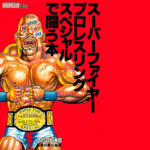
Released in: 1994
Takes place in: 1984-1992
Availability: The game was only ever released once, on Super Famicom consoles in Japan. The game can be emulated on bsnes. We produced a video translation for the Champion Road campaign.
Suda’s debut as a writer, and his second game as director. The single-player campaign, Champion Road, follows the exploits of up-and-coming wrestler Morio Sumisu, as he makes his way through the corrupt world of late 80s, early 90s Pro Wrestling.
As stated by Suda himself, Champion Road is not to be considered canonical to his multimedia storyline; however, it represents an early example of several stylistic choices that would feature prominently in his later work: his use of semi-interactivity, his passion for professional wrestling and its usage as a stand-in for ideological clashes, his use of altered names to freely refer to real people, concepts and organizations, which he inherited from Fire Pro creator Masato Masuda and, most importantly, his boldness in confronting dark issues usually excised from videogames.
Twilight Syndrome
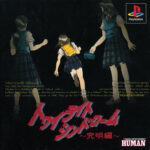
Released in: 1996
Takes place in: 1996
Availability: The game was only ever released once, on Playstation consoles in Japan. The game can be emulated on duckstation. A video translation of its story is available.
Twilight Syndrome actually refers to a duology of games: Tansaku-hen (Search Chapter) and Kyuumei-hen (Investigation Chapter), which had to be split in two releases due to production issues.
The game follows a trio of high school girls, Yukari Hasegawa, Mika Kishii and Chisato Itsushima, as they investigate ghostly apparitions in their hometown of Hinashiro.
It was Suda’s third game as director, but he was only roped into development after Keita Kimura had a breakdown and it became obvious that he could not complete development.
The main writer for Twilight was Hiroshi Kasai, with most of the scenarios having been planned before Suda even came in; as such, it’s not overtly indicative of Suda’s own writing style; Suda only penned the game’s epilogue, Prank, as a lead-in to its sequel.
Additional Media:
Moonlight Syndrome
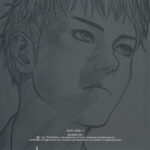
Released in: 1997
Takes place in: 1997
Availability: The game was only ever released once, on Playstation consoles in Japan. The game can be emulated on duckstation. A video translation of its story is available.
A direct follow-up to Twilight Syndrome, this time written and directed by Suda himself, who had managed to gain full control of the project due to the success of Kyuumei-hen.
Described by Suda himself as a psychological horror story, the game does away with Twilight’s ghostly investigations to depict the nightmarish day-to-day life of co-protagonist Mika Kishii, as she is lured into a whirlwind of madness by the Kazan and Tohba siblings, by her aimless, trend-chasing lifestyle in the newly urbanized Hinashiro, and by the appearance of a demonic white-haired boy.
This game serves as the origin point of most of Kill the Past‘s tent poles: the focus on astrological symbology, specifically the moon, urbanization, apartment complexes, personal trauma rooted in past incidents and so on.
Additional Media:
On the Twilight Syndrome franchise…
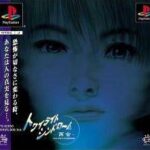
After Human Entertainment’s dissolution in 2000, the Twilight Syndrome brand was acquired by Spike, now Spike-Chunsoft, a company founded by several ex-Human employees.
Spike then produced two new games, Saikai (Reunion) and Kinjirareta Toshi Densetsu (Forbidden Urban Legends), a trilogy of live action movies meant to coincide with the release of the games, a pachinko machine and several other ancillary materials.
Due to Suda’s departure from Human and general fan reception, the franchise completely ignores and contradicts the events of Moonlight Syndrome; that is to say that the Kill the Past franchise and the Twilight Syndrome series, with the exception of its first game, are completely separate.
Since Suda had no involvement in later Twilight Syndrome titles, they are beyond the scope of this website.
The Early Days
After leaving behind Human Entertainment, Suda and a handful of his colleagues founded their own company in Grasshopper Manufacture. Their first few titles utilized the oblique world of Moonlight Syndrome as the foundation to build the Kill the Past series as an extension of Suda’s own sensibilities and thoughts about life and the world. Through this era, his scenarios are mostly focused on politics and spirituality.
The Silver Case

Released in: 1999
Takes place in: 1999
Availability: The game was translated and re-released on most current platforms.
A hardboiled, noir detective game, The Silver Case picks up from Moonlight Syndrome’s cliffhanger ending and builds upon its universe by reframing the urbanization of Hinashiro as part of the construction of a 24th Special Ward of Tokyo, and by reframing the moon murders as an isolated incident within a larger story.
The Transmitter arc, written by Suda, follows the 24th ward’s Heinous Crimes Unit as they investigate the awakening of legendary serial killer Kamui Uehara, while the Placebo arc, written by Masahi Ooka, writer of Moonlight Syndrome’s Truth Files and co-writer of most following Kill the Past titles, follows the perspective of journalist Tokio Morishima.
With The Silver Case, Suda, now unshackled, depicts his penchant for mixed media through the custom Film Window engine, inspired by the cinema of Godard and tailor-suited to display different pieces of media simultaneously.
Additional Media:
Flower, Sun, and Rain

Released in: 2001
Takes place in: 2001
Availability: The Playstation 2 version was only ever released in Japan and can be emulated through pcsx2. The Nintendo DS release was translated in English and can be emulated on Desmume and MelonDS.
Flower, Sun, and Rain, set on the tropical resort of Lospass Island, follows the quest of the Searcher Sumio Mondo who, on the behest of Flower, Sun, and Rain Hotel manager Edo McAllister, has to locate a bomb planted by a nefarious terrorist.
As Mondo is welcomed to the hotel, he is alerted by the manager that the island is experiencing a time loop, where the same day repeats as time refuses to move forward.
A follow-up to The Silver Case, Flower, Sun, and Rain represents GhM’s first attempt at a fully explorable, three-dimensional world.
Additional Media:
Killer7
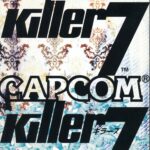
Released in: 2005
Takes place in: 2010
Availability: Killer7 is currently available on the Steam distribution platform for PCs.
Originally intended to be a follow-up to Flower, Sun, and Rain, Killer7 ended up getting re-written as a stand-alone title due to it being a higher budget production backed by Capcom, and because it was set to be Grasshopper’s first original outing to be released in the west.
Suda himself confirmed that the world of killer7 is not compatible with that of his earlier titles in an interview included in Hand in Killer7.
Despite this, the game is still heavily rooted in the mythology established in Moonlight Syndrome and developed through The Silver Case and Flower, Sun, and Rain, and it features cameos from those games as Suda’s interpretation of Osamu Tezuka’s Star System.
The story sees the Killer7, an elite team of assassins, face the kamikaze terrorist bombers “Heaven Smiles” in a politically tumultuous near future, where world peace has been achieved at the cost of national barriers collapsing.
Unbeknownst to the public, however, the killer7 are different personae of one man, able to physically manifest them into reality: that man is Harman Smith, the legedary assassin.
With this game, GhM would dip their toes into developing a real-time action game for the first time, and moreover, its status as a stand-alone title informed by the Kill the Past mythos would soon become the standard for the franchise.
Additional Media:
The 25th Ward
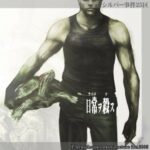
Released in: 2005-2008
Takes place in: 2005
Availability: The 25th Ward has been remade, translated and released on most current platforms.
Grasshopper’s first iterative sequel, The 25th Ward picks up where Flower, Sun, and Rain left off; the game, utilizing a simplified version of The Silver’s Film Window engine, is set in the eponymous, newly built 25th ward, where citizens are encouraged to kill one another over meaningless status symbols.
As the shadow of Kamui Uehara looms, a war threatens to break out between the 25th ward’s Heinous Crimes Unit and the Regional Adjustment Bureau, the ward’s shadow government operating under the guise of the postal system.
The Correctness arc, penned by Suda, follows the HCU, while the Matchmaker arc, penned by Masahiro Yuki, follows the RAB. The Placebo arc, for which Masahi Ooka returned as writer, once again follows journalist Tokio Morishima as he is dragged into the political turmoil of the 25th ward.
The game was originally released episodically on cellphones from 2005 to 2008, and was later remade and released on modern systems in 2018.
As the Kill the Past franchise would later transform into an anthology series of stand-alone titles, this game is currently the final entry in the original timeline.
Additional Media:
The Age of Heroes
After Killer7 put Grasshopper Manufacture on the international map, the transformation of the Kill the Past series from a linear, interconnected narrative to an anthology of stand alone stories with shared motifs and mythology was set in stone. It’s through this era that the political themes are mostly set aside as Suda develops a more satirical style using gonzo comedy to discuss social issues.
Iwazaru’s WORDS – Timeline
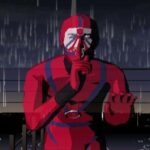
Master! This is dangerous! It’s really, really dangerous! Paradise Hotel is under the thumb of an infamous criminal gang. And they’re protecting HIM! I found this on the ground, discarded by a couple of bickering lovers. Maybe you’ll find it useful. The waywardness is… Under Harman’s Name…
As the themes, motifs and aesthetics of Kill the Past lived on through a series of stand-alone titles, the original timeline effectively came to an end with The 25th Ward. At the time of writing, this should be the complete fictional timeline of events.
1996: Twilight Syndrome
– NOTE: The Manga and Drama CD are not canonical to the game’s story.
1997-1999: Moonlight Syndrome
– Moonlight Syndrome: The Truth Files
– Yocyou
– Rinne
– Inyaku
1999-2000: The Silver Case
– PreLunatics
– The Silver Case 4.5: Face
2001: Flower, Sun and Rain
– Lospass Guidebook
– One Island, One Resort, and One More Episode
2005-2017: The 25th Ward
– Red, Blue and Green
Samurai Champloo

Released in: 2006
Availability: Samurai Champloo (Sidetracked) was only released on Playstation 2 consoles in Japan and the United States. The game can be emulated on pcsx2.
The first of two licensed titles written and directed by Suda51. This one is based on Samurai Champloo, the anime show directed by Shinichiro Watanabe about the two ronin, Mugen and Jin, accompanying a girl named Fuu to Nagasaki through a fantastical rendition of feudal Japan.
In this game, the characters are “sidetracked” into a trip to Ezo, where they get involved in the conflict between the ethnic Ainu tribe and the ruling Matsumae clan.
Despite it being a licensed title, Sidetracked still served as a vehicle for some of the ideas that Suda explored through the Kill the Past series, such as Ainu spirituality, conspiracies, technocracy and enlightenment through murderous dehumanization.
It is also notable for being Suda’s first scenario to be almost entirely farcical. Though earlier games, even the extremely dour Moonlight Syndrome, made liberal use of humor, Sidetracked’s plot is played entirely for laughs, something that will become more relevant in his later career.
Blood+ One Night Kiss

Released in: 2006
Availability: One Night Kiss was only released on Playstation 2 consoles in Japan; it can be emulated on pcsx2.
The second licensed title to be written and directed by Suda51, this time based on the anime show Blood+, the tale of amnesiac ancient vampire Saya Otonashi being recruited by Red Shield to exterminate Chiropterans and uncover the conspiracy related to their creation, achieved by smuggling Delta67 through the American military.
In One Night Kiss, Saya is flown to Shiki New Town to deal with the local Chiroptera.
Even more than Sidetracked, One Night Kiss was a vehicle for Suda’s ideas and Kill the Past philosophy more than any kind of adaptation of the show; the game’s co-protagonist, Public Security detective Gou Aoyama, is a fully original character, as are most people encountered through the course of the game.
Interestingly, Aoyama’s Red Shield handler is called Akama, meaning that the two investigators share their names with their counterparts in The 25th Ward. The Ishizaka conglomerate present in most other games of this franchise is also referenced in the form of ZaKa Mart.
The scenario itself is more interested in reprising themes from Moonlight Syndrome such as the pulse of apartment complexes, the madness brought on by urbanization, the destruction of the family unit and the loss of tradition than it is on focusing on Saya’s struggle against the Chiroptera.
Suda himself referred to the game as ‘Moonlight Syndrome 2’ both in interviews and in the game itself; as such, it was predictably rejected by fans of the show.
Sidetracked and One Night Kiss are GhM’s first experiments with sword-fighting combat, and the latter also serves as their second foray into open world design after Flower, Sun, and Rain.
No More Heroes
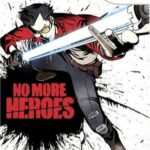
Released in: 2007
Takes place in: 2007
Availability: The game was re-released on some current platforms; however, these ports are flawed in a variety of ways and emulating the Nintendo Wii version through Dolphin is preferable.
As stated by Suda himself, much like Killer7, No More Heroes was envisioned as a stand-alone title rather than a continuation of the world of The Silver Case.
However, much like Killer7, it still ends up threading on similar ground, featuring depictions of remnant psyches, the full moon, and having its main character experience disassociation due to his past trauma, though these ideas are dealt with in markedly different ways.
The game follows Travis Touchdown, an otaku moonlighting as an assassin to pay for his consumerist hobbies, who unwittingly gets entered in the rankings of the United Assassin Association after taking on a contract hit from the mysterious Sylvia Christel.
Similarly to how One Night Kiss reprised and expanded upon themes which originated in Moonlight Syndrome, No More Heroes does the same with Champion Road, with Travis’ ascent through the ranks being at least in part an allegory of Morio Sumisu’s wrestling career, with several Fire Pro characters (namely Thunder Ryu, Volf Van and Randall Lovikov) and Morio himself being referenced through the course of the game.
As the culmination of the sword fighting gameplay developed through Sidetracked and One Night Kiss, Grasshopper managed to create a simplistic yet intuitive and entertaining combat system and have it co-exist seamlessly with an iconic open world city map, finally striking a chord with mainstream audiences.
Additional Media:
The Blondes Era
After the release of No More Heroes, Grasshopper began flirting with the mainstream and entered an era of rapid expansion which ultimately resulted in it being bought out by crypto-Korean company GungHo in 2013. Through the course of this era, Goichi Suda mostly took on a managerial role, largely focusing on managing the company instead of directing or writing. For this reason, the Kill the Past franchise was mostly put on hold, as Suda’s personal projects were often mingled with by producers and re-written to be starkly different from their initial proposals.
No More Heroes 2 Desperate Struggle

Released in: 2010
Takes place in: 2010
Availability: The game was re-released on some current platforms; however, these ports are flawed in a variety of ways and emulating the Nintendo Wii version through Dolphin is preferable.
Due to No More Heroes’ success, a sequel was quickly greenlit by its publishers; Suda, at the time busy with his passion project Kurayami, unloaded directorial duties on Nobutaka Ichiki and penned a farcical, by-the-numbers scenario to justify a second ascent through the ranks for Travis, as he fights a colorful cavalcade of assassins, designed by Yosuke Kozaki before the script was even written.
This time, Travis, now treated as a celebrity for cleaning up his hometown of Santa Destroy, decides to take revenge on Jasper Bat (formerly Butt), the CEO of a pizza restaurant chain that also happens to be the number 1 ranked assassin, who made a deal with the mafia to take over Santa Destroy and kill Travis’ best friend Bishop in revenge for Travis killing his family in the previous game’s side-missions.
The game omits its predecessor’s open world in favor of a completely linear experience, in which Travis (and some of his friends) hack and slash their way through several sets of levels before facing the various bosses.
Additional Media:
Kurayami
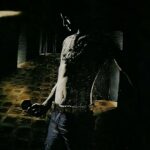
UNRELEASED
Shadows of the Damned: 2011
Black Knight Sword: 2012
Availability: Shadows of the Damned is currently set to be released on most current platforms. Black Knight Sword can be emulated on RPCS3.
Kurayami was to be the tale of a land surveyor, G., roaming the titular darkness in his quest to reach the castle, an adaptation of Kafka’s The Castle, a novel markedly attuned to Suda’s sensibilities in regards to bureaucracy and urbanization.
The game itself was to be the culmination of Grasshopper’s design sensibilities, mixing the action adventure elements they learned to craft through the course of their careers with open world exploration and finally realizing Suda’s ideal of mixing combat and NPC interactions.
Unfortunately, through the intercession of Tim Robins, EA became involved with producing the game. The scenario draft had to be re-written five times before it was approved by producers; the fifth and final draft saw the light of day as Shadows of the Damned, a linear third person shooter following demon hunter Garcia as he makes his way through the armies of hell by shooting them with his talking skull/penis gun, Johnson, to rescue his girlfriend Paula.
The script used in the game is a gonzo comedy with most of the jokes revolving around genitalia and the bizarre nature of videogame logic.
The second out of five scripts was then adapted by Ren Yamazaki in the two-dimensional action platformer Black Knight Sword the following year. While closer in terms of story to the original concept of Kurayami, the game is very much a product of Ren Yamazaki’s artistic sensibilities rather than Suda’s.
Killer is Dead
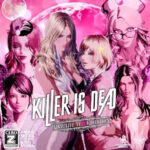
Released in: 2013
Availability: Killer is Dead is currently available on the Steam distribution platform for PCs.
Much like Kurayami, Killer is Dead, not to be confused with the short story Killer is Dead, was originally announced as a personal project. Much like Kurayami, Suda’s initial draft ended up being changed substantially from its initial premise of a spiritual successor to Killer7 and No More Heroes bravely tackling adult, controversial themes.
The story of Killer is Dead revolves around Bryan’s Execution Agency, a state service where private citizens can apply to request the execution of a criminal.
The main character, Mondo Zappa, a smooth operator and manwhore, takes on the role of Executioner after executing his predecessor. Through the course of his missions, he is accompanied by Vivienne, a blonde woman equipped with multiple arms, Mika, a cheerful, young blonde girl, and by Bryan himself, who is half-cyborg.
Soon enough, a conspiracy is revealed involving dark matter, a mysterious substance coming from the moon that turns people into criminals and ultimately into monsters named WIREs, and David, the new ruler of Earth’s satellite.
The original proposal drafted by Suda involved several semi-interactive setpieces, each built around the different skills of every member of the team. The finished game, however, only sees Mondo being playable, with his teammates occasionally helping in very minor ways.
Moreover, Suda’s proposal was heavily political, including references to the execution of Osama Bin Laden and the Rothschild family; likely due to budgetary and marketing concerns, the game was altered heavily during production.
Despite producer interference, however, Killer is Dead still manages to tackle some of the Kill the Past motifs in a novel way, mostly focusing on changing values how people and concepts come to be perceived as “evil” through virtue of being outdated, and it also featured a whole new way of interpreting Suda’s astrological symbology.
The game also represented a marked improvement in regards to the, at this point usual, hack-and-slash combat of GhM’s games, successfully mixing long-range and short-range combat through the use of a laser gun, part Mondo’s cybernetic arm.
Susie Sumner’s WORDS – References

Hello there, Smith. (´-`)ノ Nice day today, isn’t it? The sun’s out, the birds are chirping, and here I am, stuck in a box. (¯3¯) You lost this, didn’t you? Get your head out of your ass, stop leaving all your shit around! I’m not your XXXXING maid! (`へ´#)
Even before the formal introduction of the “Sudaverse” concept, most of Grasshopper’s original titles (and even some unrelated games) included references and crossovers with one another, even if they had little or no involvement from Suda himself.
Fire Pro Wrestling Series (Human Entertainment, Spike, Spike-Chunsoft)
– Violence Kouno, the Fire Pro alias of real-life wrestler Masahiro Chono, is mentioned in Moonlight Syndrome. While he made his debut in the series in Fire Pro Wrestling 3, his monicker of “Violence” Kouno did not appear until Super Fire Pro Wrestling X, released in 1995.
– In the original No More Heroes, Travis can find messages left behind by Morio Sumisu, protagonist of Suda’s own Champion Road, teaching him several suplexes of his rival, Akira Saeba/Maeda.
– Travis’ master, Thunder Ryu (Fire Pro alias of Genchiro Tenryu) has been a part of the Fire Pro series since its very first installment, while the NPC Randall Lovikov (Andrei Kopylov) made his debut in 2001’s Fire Pro Wrestling D.
– In No More Heroes’ UAA Ranker’s Bible, Volf Van is described as a Russian engineer working on Beam Katanas. Volf Van is the Fire Pro alias of Volk Han, and he made his first appearance in Suda’s Super Fire Pro Wrestling III.
Detective Jinguji Saburo: Innocent Black (2002 – Developed by WorkJam)
– This title, not developed by Grasshopper, featured a crossover with The Silver Case, with appearances from Tetsugoro Kusabi and Tokio Morishima.
Michigan (2004)
– The Balboa Brothers from Flower, Sun and Rain are mentioned in a note; both games consistently describe them as actors.
– The Ishizaka conglomerate is referenced in the form of ZaKa TV.
Diabolical Pitch (2012)
– The two playable characters, McAllister and Guerrero, used to pitch for the Santa Destroy Red Tigers and the Lospass Blue Legions respectively, referencing both No More Heroes and Flower, Sun and Rain, with McAllister even sharing a surname with hotel manager Edo.
– McAllister also makes an appearance in Travis Strikes Again, where his first name is revealed as “Nigel”.
Lollipop Chainsaw (2012)
– Juliet Starling has a brief cameo in Killer is Dead.
– A character inspired by her also appears in Travis Strikes Again, as Grasshopper could not manage to secure the rights for an actual cameo.
Ranko Tsukigime’s Longest Day (2014)
– The Yakumo Manifesto from Killer7 is referenced within the game.
Let it Die (2016)
– Yotsuyama Electronics is referenced in The 25th Ward’s spin-off short story and manga, Red, Blue and Green.
– The Death Drive console is the interface through which the player interacts with the game; a different model of the same console also appears in Travis Strikes Again.
– The construction of the 26th Ward is alluded to in a sign on the 10th floor of the Tower of Barbs, as it is in some endings of The 25th Ward.
– The Earth Rage earthquake is mentioned both in this game and in Travis Strikes Again.
– Mejin, one of the supporting characters, seems to be styling himself after Master Taro Gida, a legendary gamer alluded to in Travis Strikes Again and No More Heroes III.
Super Fire Pro Wrestling World: Champion Road Beyond (2020)
– Direct sequel to Champion Road following the career of Morio Sumisu’s son.
– His co-star, Notorious, also appears in Travis Strikes Again and No More Heroes III.
The Patsukin Era
Tired of producer interference and inspired by the rise of indie gaming, Suda began the process of breaking out of his corporate gulag. In 2016 he started releasing original writing works outside of the constraints of Grasshopper Manufacture while pushing for re-releases and translations of The Silver Case and The 25th Ward, which also featured additional content reinforcing the interconnected universe he had left behind during the Blondes Era. This culminated in GhM downsizing and splitting from the GungHo group in 2018.
Through this era, Suda’s fascination with Tezuka’s Star System is put on full display and Kill the Past is reinterpreted as part of a multiverse encompassing the company’s entire catalog, likely inspired by the rise in popularity of the Marvel Cinematic Universe, with Suda interchangeably referring to it as Sudaverse or Grasshopperverse: characters from wildly different realities now effortlessly jump from one piece of media to another without any real concern for three-dimensional logic, with Copyright being the only law impeding free migration.
Unlike the previous three eras, Suda’s writing is markedly more autobiographical and personal.
Kurayami Dance
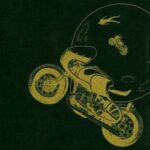
Released in: 2015-2016
Availability: This manga was only released in Japan, though a fan translation is available.
Kurayami Dance is a manga written by Goichi Suda and drawn by Syuji Takeya, who also served as the artist for The Silver Case and The 25th Ward manga spin-offs, PreLunatics and Red, Blue and Green.
It is based on one of the unused scripts for Kurayami, possibly an altered version of the fourth script incorporating elements from the first three, but the details are not confirmed.
Kurayami Dance stars ‘Kamikaze’ Wataru, an undertaker with a passion for motorcycles; one night he decides to test his limits by going beyond the Red Zone, riding his bike at 300mph.
This results in a near fatal accident. Wataru wakes up in a mangled body, which takes three years to be fully restored.
Once he awakens, Wataru finds his hometown changed to the point of being unrecognizable: most of its inhabitants moved to “the castle”, a newly developed urban area which seems to operate under different laws than Japanese soil.
As soon as he returns to his workplace, he is immediately offered a job that would lead him to that very same castle. He accepts, eager to confront the castle and reclaim the three years he lost.
Though, inexplicably, as he confronts the absurd and overtly bureaucratic society of the castle, Wataru is also confronted by his own past.
The story serves as an opportunity for Suda to explore personal subjects, such as his relation to his job as an undertaker and the relationship with his family, while also marking a return to the themes of urbanization and its effects on the human psyche which he developed at the beginning of his career.
Makkana Onnanoko

Released in: 2016
Availability: This episodic novel was only released in Japan, though we produced a fan translation.
Makkana Onnanoko is an episodic novel originally published on Famitsu’s website as part of the FABLES51 column.
The story, presented in the format of a series of blog posts, stars Mamoru Kimishika (also known as Will Protect among Makkana fans), a Japanese middle school student living in the small town of Mayumori.
One day, a new student transfers to his middle school from Tokyo; all the boys are immediately entranced by her beautiful appearance, but Mamoru, for some reason, is able to see her throbbing veins, blood and organs underneath her skin, making her the titular “Bright Red Girl”.
Despite the intriguing premise, the vast majority of the text is actually occupied by ruminations and tangents about Mamoru’s day-to-day life in the current Japanese commercial and cultural landscape, a not so subtle excuse for Suda himself to comment on fast food, music, comedians, the internet and anything else that could possibly come to mind.
Just like Kurayami Dance, Makkana Onnanoko is a thinly veiled biographical story; while Kurayami Dance depicts the Suda “of the past” (though Wataru is, ironically, an adult), Makkana Onnanoko is instead a window into the Suda “of the present” (though Mamoru is, ironically, a young boy).
The story also has ties to the then soon-to-be re-released The 25th Ward, by directly referencing one of its fictional locations.
Travis Strikes Again: No More Heroes
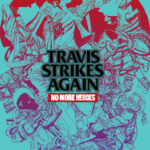
Released in: 2019
Takes place in: 2017
Availability: The game is available on current platforms.
This game was the first one developed by the new, downsized GhM, and it marked the return of Suda to the director’s chair, the return of Travis Touchdown as the game’s protagonist, and the company’s 20th anniversary.
The game sees Travis, who has abandoned friends and family to game in isolation in his trailer house, being attacked by Bad Man, the father of one of his previous victims. As the two fight, they are dragged into Travis’ Death Drive console, which transports them inside the world of gaming.
It is said that by collecting all of the seven Death Balls, the console’s games, a wish will be granted. The two strike an unlikely alliance to collect all the balls and bring Bad Man’s daughter back to life.
Unsurprisingly, in accordance to the abstract autobiographical style developed by Suda in the Patsukin Era, the game’s plot is merely an excuse for him to externalize his personal experiences as a game developer, with many exact parallels between his career and that of Doctor Juvenile, the creator of the Death Drive and its games.
This is the first Grasshopper game to prominently feature a multiplayer mode, as two people can control Travis and Bad Man respectively as they hack-and-slash their way through the isometric levels; the focus on mixed media is also back, as each game’s attract mode is depicted in a starkly different style, and each Death Ball is collected by reading through a DOS-inspired text adventure stage.
By tying into one of The 25th Ward’s new chapters included in the 2017 re-release, the game solidified the concept of “Sudaverse” by having Grasshopper characters casually moving from one game to the other, Travis Strikes Again featuring cameos from nearly every title developed by the company.
No More Heroes III
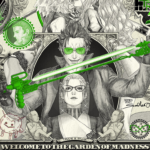
Released in: 2021
Takes place in: 2021
Availability: The game is available on current platforms.
No More Heroes III, thanks to a much needed budgetary increase, boldly attempted to bring back the open world structure of the first title.
The story follows Travis, who has returned to Santa Destroy, as he saves the world from an alien invasion.
EA’s President Urban developer Damon Riccitiello summons his alien friend FU from deep space, but FU reveals himself as a callous, psychopathic villain, intent on taking over the world. Sylvia, posing as Damon’s secretary, somehow uses the UAA to once again set up ranked fights, allowing Travis to save Earth by climbing the Galactic Rankings.
The game was envisioned as a gift to long-time fans who supported the series until that point; as such, it plays with an action-figure aesthetic meant to evoke the idea that Suda himself is giving players permission to play with his toys in the playground that is No More Heroes.
The story was originally meant to feature deeper ties to Shadows of the Damned and Kill the Past, developing the idea of “Sudaverse” introduced in Suda’s latest work, but unfortunately they ended up being left on the cutting room floor due to budgetary concerns.
For the same reason, the addition of multiple playable characters and of playable stages were also scrapped, meaning the game did not exactly live up to its “playground” aesthetic.
After the release of No More Heroes III, rights for the series reverted back to Marvelous and Grasshopper was bought out by Chicom company NetEase.
The NetEase Era
[NOTE: Following events are yet to transpire. As such, a gag order was issued by Public Security.]
